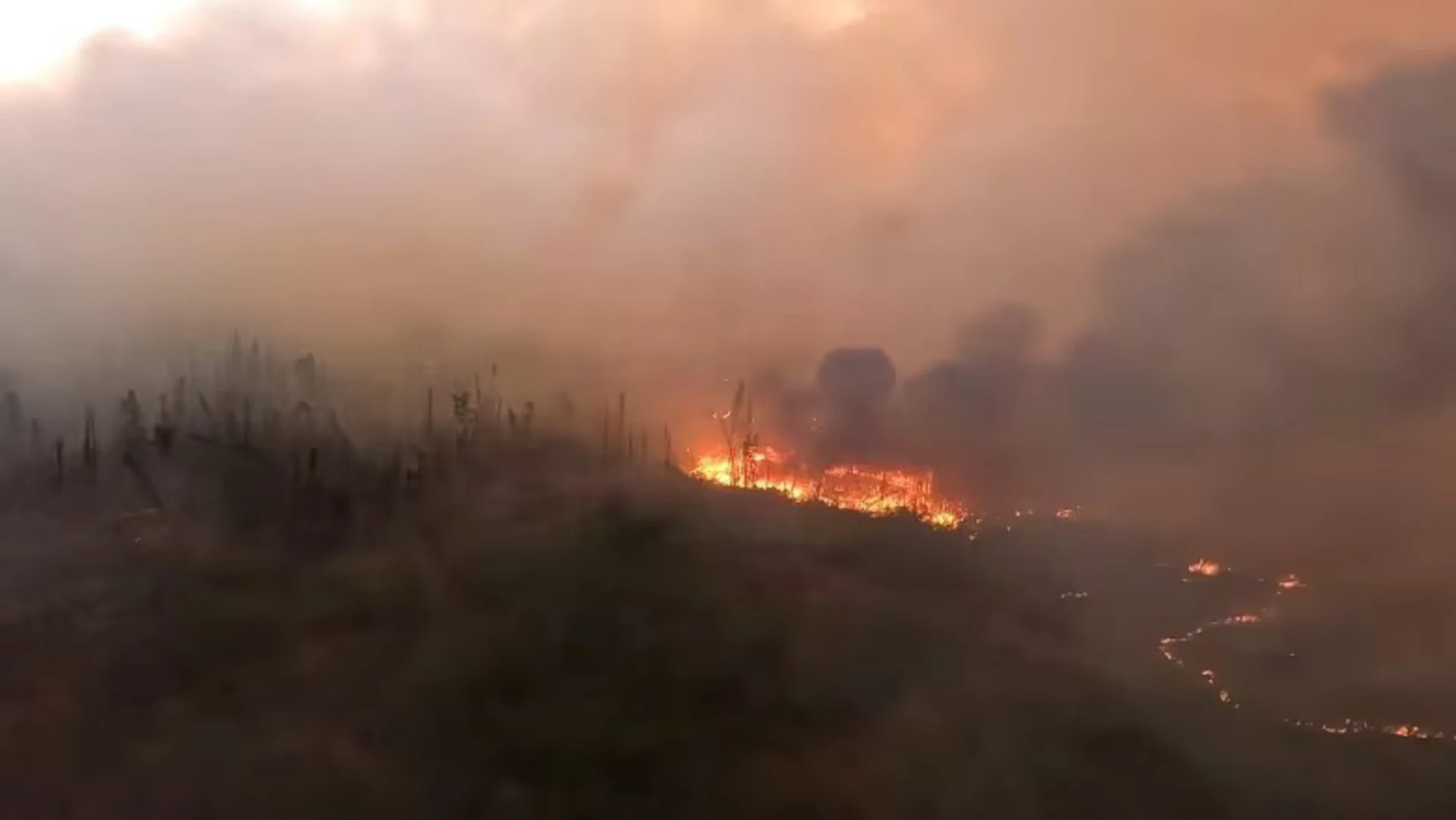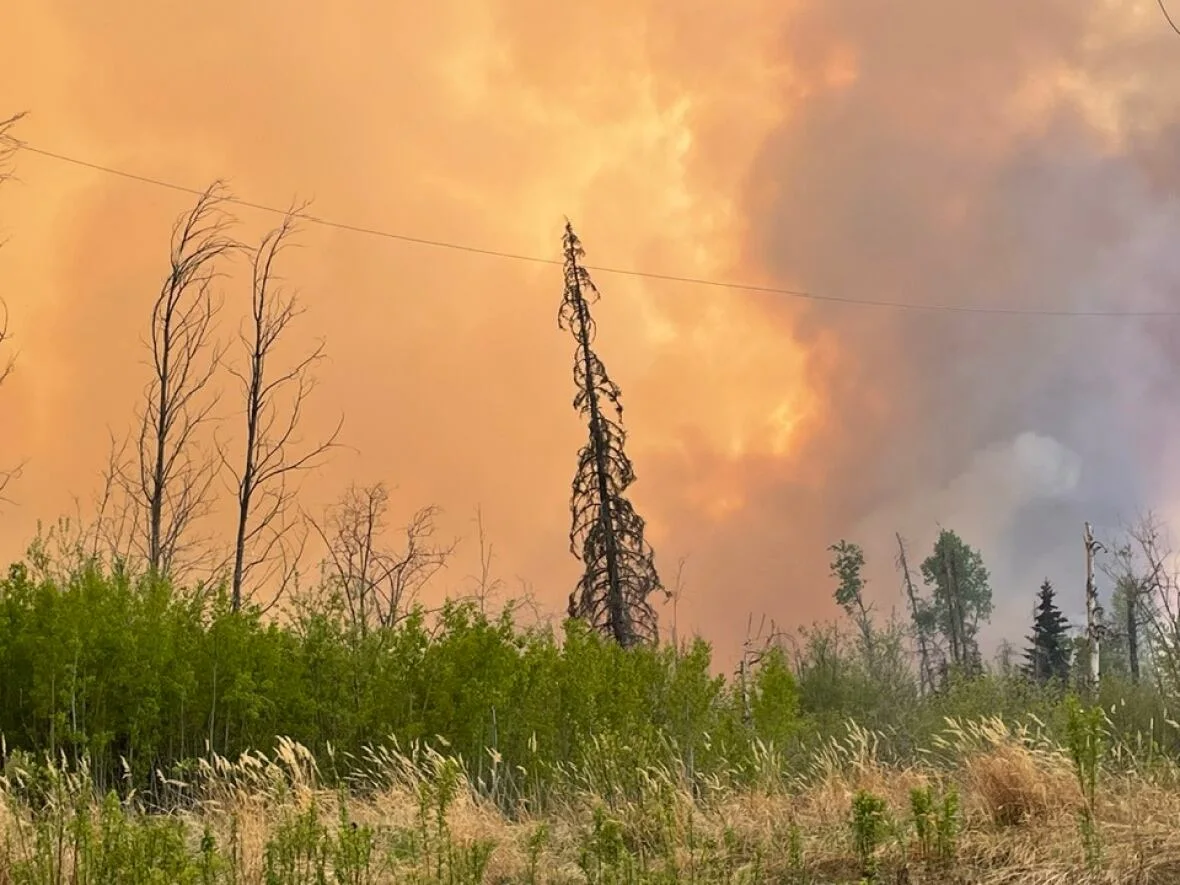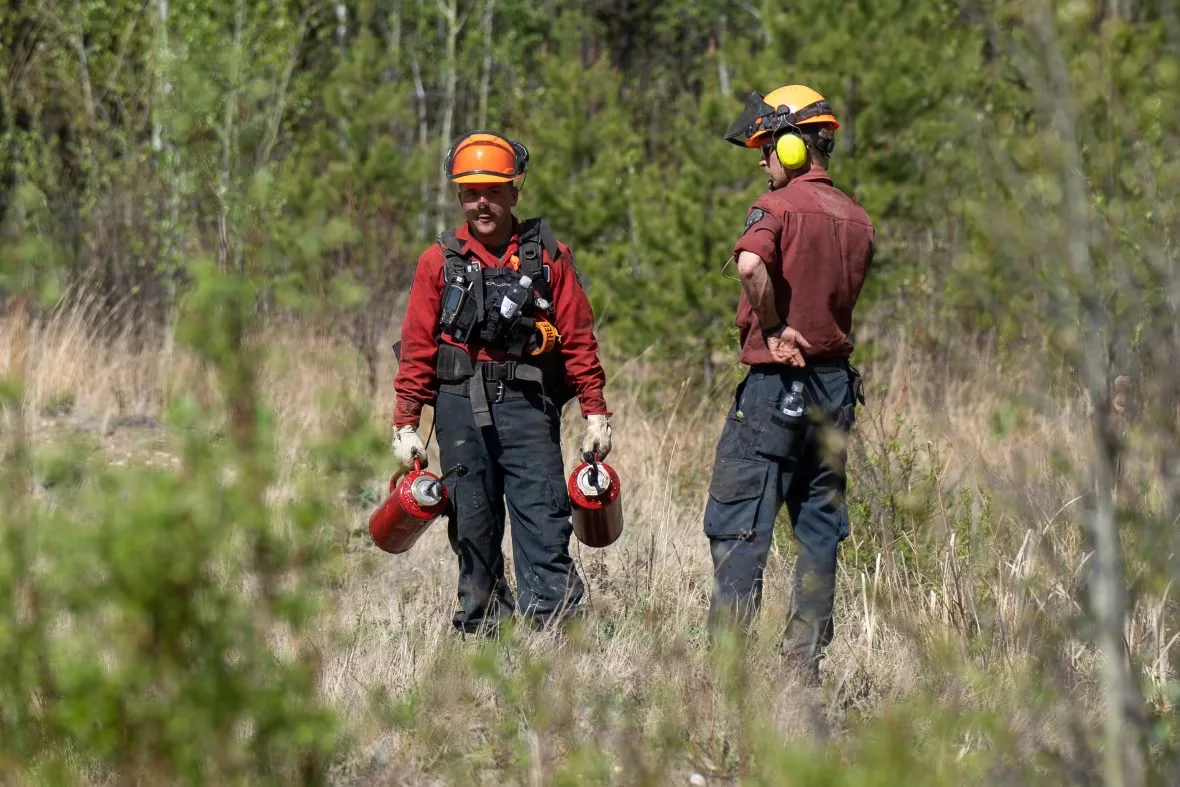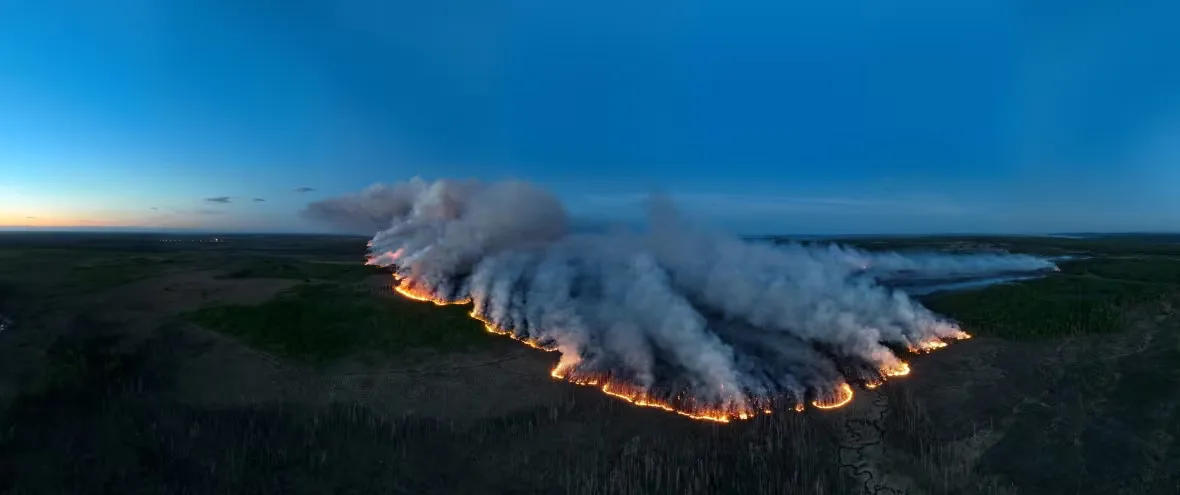
Over 20,000 placed on evacuation alert due to wildfire near Fort St. John, B.C.
Advancing wildfires in northeastern B.C. have more than 20,000 people prepared to leave their homes at a moment's notice.
The entire municipality of Fort St. John has been placed on evacuation alert due to advancing wildfires in the area.
An alert means that people do not need to leave their homes but should be prepared to do so at a moment's notice.
Visit The Weather Network's wildfire hub to keep up with the latest on the active start to wildfire season across Western Canada.
The alert was issued at 2:30 p.m. Pacific due to the Stoddart Creek Wildfire, which is classified as out of control and is estimated to cover 180 square kilometres (18,000 hectares) as of noon Monday. It is one of two large fires burning northwest of Fort St. John, along with the Red Creek fire.
Highway 97 has also been closed 27 kilometres north of the city due to the blaze, with fire information officer Hannah Swift saying that the Stoddart Creek fire is burning on either side of the road.
WATCH: It's wildfire season, pack your 'grab-and-go' box with these items
READ MORE: Wildfire terms every Canadian should be familiar with
Swift says that the B.C. Wildfires Service is tracking a cold dry front that is moving south, and is likely to cause a drastic shift in the wind direction — where winds were once blowing from the south-southwest, they are soon expected to start blowing from the north, meaning the fire could spread south toward Fort St. John.
"[The winds] are going to be sustained 25 to 40 kilometres per hour, and we're looking at gusts upwards of 60 kilometres an hour," she said. "This is a huge heads up for us. It's going to bring an enormous amount of smoke to the area all the way down to Prince George.
"With that wind and the growth that we're, we're projecting, we're likely going to be unable to keep crews on the wildfires, we're going to have to remove them because it won't be safe for them to work adjacent to these fires."
At 7:15 p.m. Monday, the B.C. Wildfire Service tweeted that crews had withdrawn from fighting the Stoddart Creek and Red Creek fires due to "aggressive fire behaviour and resulting smoke and poor visibility," with structure protection personnel set to work through the night to secure properties southeast of the two blazes.
Fort St. John, approximately 600 kilometres northwest of Edmonton and 1,200 kilometres north of Vancouver, is the second largest municipality in northern B.C., following Prince George, 400 kilometres away.
WATCH NOW: Heat, flood, and fire concerns plague British Columbia
READ MORE: Summer heat continues in B.C., thunderstorm risk elevates wildfire fears
Should the alert be upgraded to an order, it would be one of the largest single evacuation orders due to wildfires in B.C., with Fort St. John home to roughly twice as many people as the community of Williams Lake, which was evacuated due to wildfires in 2017.
Several other evacuation orders and alerts are already in place due to wildfires burning in the region.
The Peace River Regional District says 1,800 properties are on evacuation order due to the Red Creek and Stoddart Creek fires, with a further 3,100 on evacuation alert.
An evacuation alert means residents should prepare to evacuate their homes, possibly with little to no notice. An evacuation order means a resident should leave immediately.
Alert issued as precaution
Swift said that the evacuation alert for Fort St. John was "not taken lightly" and was due to rapidly shifting winds.
"We have been working with our forecasters and our fire behaviour specialist to forecast growth projections," she said. "The worst-case scenario does not impact the city at this time."

The Stoddart Creek wildfire near Buick, B.C., prompted the Blueberry River First Nation to issue an evacuation order Monday morning. (Cherly Streicher)
Ryan Harvey, an information officer in Fort St. John, said it was important for people not to panic as the alert was issued.
"The city continues to not be under threat by the wildfires, but this is just an opportunity for people to be prepared," he said.
SEE ALSO: Talking about the warmth? Add heat dome to your vocabulary, here's why
First Nations ordered to evacuate
The Blueberry River First Nation has asked its entire community of 500 members to gather their essential items, pets, and valuable belongings and head to the North Peace Arena in Fort St. John, approximately 80 kilometres southeast of the Indigenous reserve.
The authority has told its members that the B.C. Wildfire Service and the Mackenzie Fire Department will be present to protect the structures within the reserve and set up a sprinkler system in the community.
In a written statement, the First Nation advised those still remaining in the community to remove any debris, including lawn chairs, tables, tents, and other household items from around their homes.
The entire Doig River First Nation has also been placed on evacuation order, which affects more than 100 people that live on the reserve.
Officials say that with Fort St. John being placed on evacuation alert, evacuees that are not already registered will be asked to move to Dawson Creek instead, which is 75 kilometres to the south.

Firefighters are seen conducting a planned ignition operation near the Boundary Lake fire on the B.C.-Alta. border on Friday. That fire continues to burn out of control, and has led to evacuation alerts. (Adam Buchanan/B.C. Wildfire Service)
"We're not able to take in any new people into the Fort St. John area because it has gone on alert, and hotel accommodation in the area is pretty much maxed out," said Mike Watkins, an emergency official with the Peace River Regional District. "It's a bit of an inconvenience, but Dawson Creek has a good supply of available hotel rooms."
The nearby wildfires raging in Alberta have meant that communities that would have traditionally accepted evacuees are dealing with crises of their own, according to Watkins.
According to Environment and Climate Change Canada, Fort St. John is expected to experience daytime temperatures this week that are 5 C to 15 C above the seasonal average.

As of Monday evening, the Stoddart Creek blaze covers an area of 130 square kilometres. (B.C. Wildfire Service)
Most fires human-caused: Wildfire Service
As of Monday afternoon, there are 58 active fires across B.C., with five of them considered to be fires of note, meaning they are highly visible or pose a threat to public safety.
Most are in the Prince George Fire Centre, which covers the northeast portion of the province.
The province has identified four of these fires of note, including the Stoddart Creek wildfire, as human-caused.
Erika Berg, a provincial wildfire information officer, has emphasized that over 70 per cent of wildfires currently burning are a result of human activity and is urging people to exercise caution.
"There is the risk of an open fire getting away. There is the risk if you are using an off-road vehicle in very dry off-road areas," Berg said. "We're asking folks to consider those conditions and maybe save those activities for when we're seeing a bit more of a downturn in the weather."
WATCH NOW: It's wildfire season, pack your 'grab-and-go' box with these items
This article was originally published for CBC News. With files from Akshay Kulkarni and Winston Szeto









